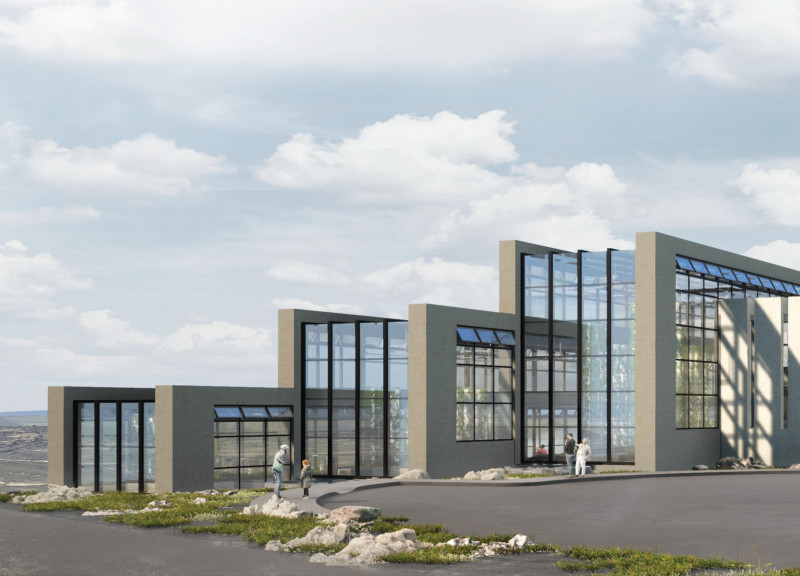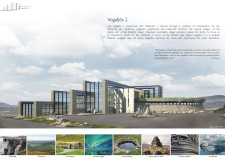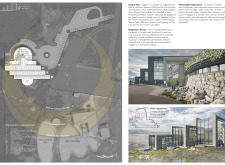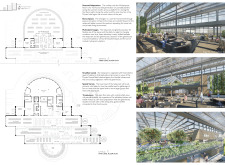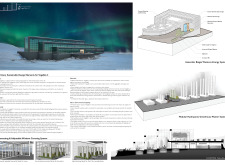5 key facts about this project
The building's form is notably designed to maximize natural light, with expansive glass walls and an organic roofline that follows the contour of the terrain. These design choices not only provide aesthetic appeal but also create an inviting atmosphere for guests. The prominent use of transparent materials enhances the connection between indoor and outdoor spaces, allowing visitors to appreciate the surrounding landscapes while dining or participating in educational programs. The design encourages an appreciation of seasonal changes and the dynamic nature of the region.
Material selection plays a crucial role in this project. Concrete provides a solid foundation, ensuring durability and stability, while steel adds strength to the structure without sacrificing aesthetics. The careful choice of wood complements the building's environment, bringing warmth to the interiors and underscoring a natural connection to local materials. This approach highlights the project's commitment to sustainability, as materials have been sourced responsibly and chosen for their low maintenance and longevity.
Vogáfjós 2 offers a variety of functional spaces that cater to different activities. The restaurant areas are thoughtfully organized over three levels, each offering unique views of the landscape and creating an engaging dining experience. The greenhouse component is an important feature, utilizing hydroponic systems to demonstrate the potential for local food production. This space not only supports the restaurant's culinary practices but also serves as an educational tool for visitors who are interested in sustainable agriculture.
The project stands out for its unique approach to blending architecture with biophilic design principles. By prioritizing natural elements and ensuring that indoor environments feel connected to the outdoors, Vogáfjós 2 fosters a sense of calm and presence among its visitors. Design elements, such as adjustable glazing and strategic landscaping, enable the building to adapt efficiently to changing climatic conditions, further reinforcing its sustainability ethos.
The educational aspect of Vogáfjós 2 is pivotal, as it serves as a platform to promote awareness of local agriculture, cooking practices, and environmental stewardship. Visitors are encouraged to engage actively with the space, gaining insights into how architecture can support sustainable living. The engaging layout and variety of spaces offer numerous opportunities for communal gatherings, workshops, and classes, highlighting the project's commitment to serve the local community as well as tourists.
Exploring the Vogáfjós 2 presentation can provide deeper insights into the architectural plans, sections, and overall design intentions. The project encapsulates the principles of adaptive architecture tailored to the local environment, representing a mature understanding of how design can contribute positively to both people and place. Those interested in sustainable design and architecture will find Vogáfjós 2 to be a compelling example of how built environments can engage with their natural surroundings while promoting meaningful experiences. Reviewing the architectural designs of Vogáfjós 2 will reveal the practical application of innovative ideas that underscore its significance in contemporary architecture.


